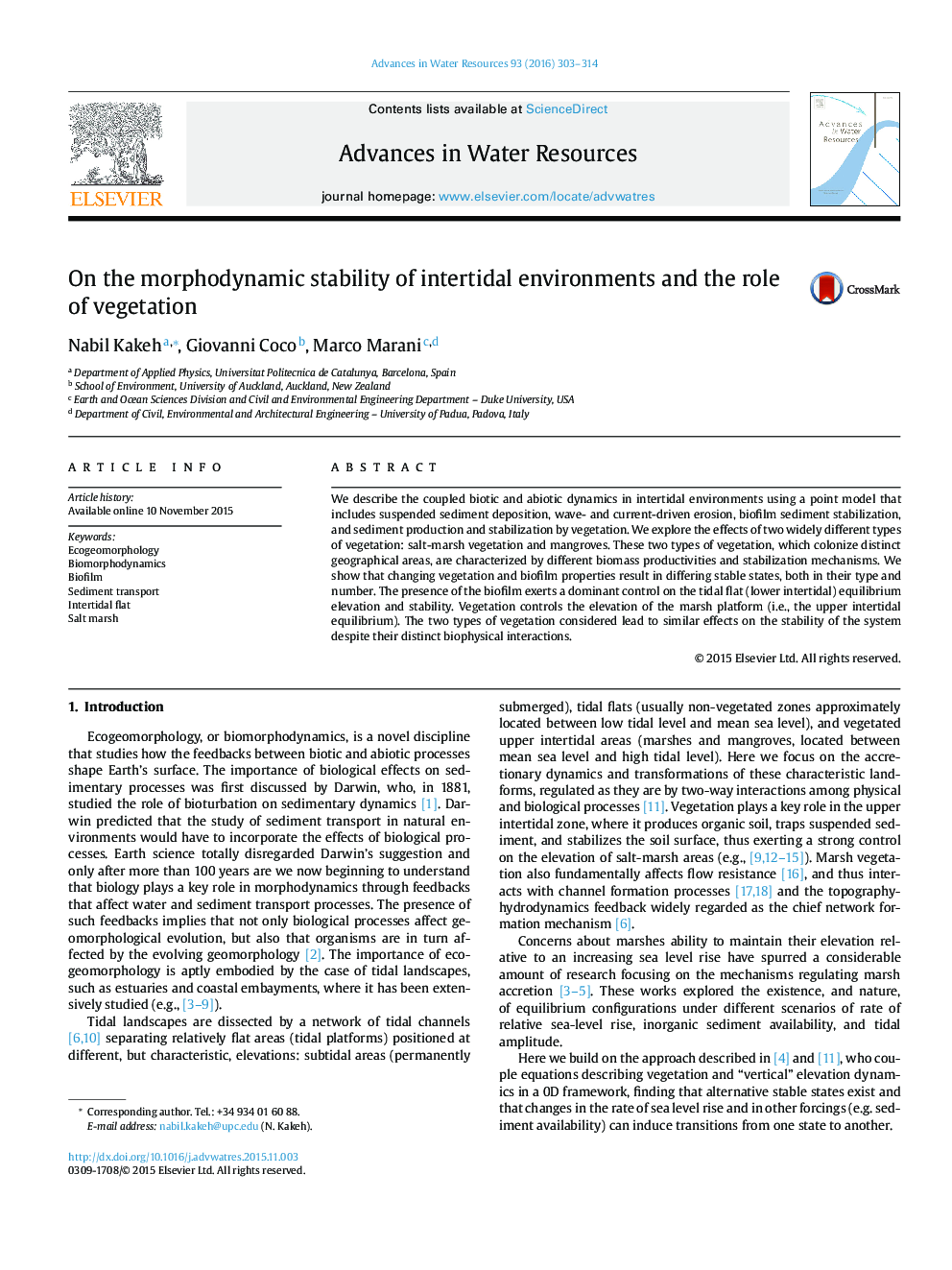| Article ID | Journal | Published Year | Pages | File Type |
|---|---|---|---|---|
| 4525239 | Advances in Water Resources | 2016 | 12 Pages |
•We develop a tidal platform point model, coupling abiotic and biotic processes.•We include the effects of the biofilm layer and Spartina or mangroves.•Bio-Geomorphic feedbacks allow the system to reach intertidal stable states.•Biofilm decreases the wave erosion diminishing the presence of submerged stables states.•Salt marshes are more resilient to increasing sea level rise rates than mangroves areas.
We describe the coupled biotic and abiotic dynamics in intertidal environments using a point model that includes suspended sediment deposition, wave- and current-driven erosion, biofilm sediment stabilization, and sediment production and stabilization by vegetation. We explore the effects of two widely different types of vegetation: salt-marsh vegetation and mangroves. These two types of vegetation, which colonize distinct geographical areas, are characterized by different biomass productivities and stabilization mechanisms. We show that changing vegetation and biofilm properties result in differing stable states, both in their type and number. The presence of the biofilm exerts a dominant control on the tidal flat (lower intertidal) equilibrium elevation and stability. Vegetation controls the elevation of the marsh platform (i.e., the upper intertidal equilibrium). The two types of vegetation considered lead to similar effects on the stability of the system despite their distinct biophysical interactions.
